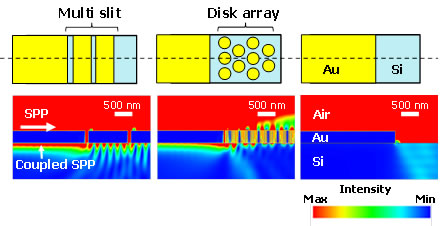

However, the correct description of excitonic response should involve the interaction with the surroundings. They are often approximated as a two-level atomic system. The fundamental optical excitations in such systems are excitons, which are bound pairs of electron and holes, and exhibit hydrogen-like discrete energy levels. Some aspects of dipole light–matter interactionĪ natural choice for investigating light–matter interactions in condensed matter systems, particularly at room temperature is that of semiconductors supporting direct interband optical transitions. In this regard, interactions between excitons and surface plasmon polaritons (SPPs) in semiconductor-metal hybrid nanostructures provide a wonderful playground for exploring various areas. In recent years, exploration of such quantum optical phenomena in condensed matter systems has attracted significant attention due to the possibility of observing the effects at room temperature and applications in wide-ranging fields like development of novel light sources and optoelectronic devices, photovoltaics, photocatalysis, chemical kinetics, sensing, etc.
#Energy in surface plasmon field with dispersio free#
Several of these intriguing phenomena have been demonstrated for relatively pure atomic systems, free of other physical interactions, confined in a cavity. Optical resonators also provide an opportunity to investigate several other coherent quantum mechanical effects, which otherwise are masked due to the interaction with a continuum of free-space modes. The radiative relaxation can be enhanced, suppressed or even be made reversible by placing an emitter within an appropriate resonator. Thus, modifying the electromagnetic environment by altering the mode distribution as in case of an optical resonator or a cavity, significantly alters the light–matter interactions. The recent progress made in this field is expected to give rise to novel applications of active plasmonic structures.Īn intriguing result of quantum optics is that the most elementary light–matter interaction, that of an emitter relaxing via emitting a photon, is not an intrinsic property of the emitter, but is a result of emitter–environment interaction. It is amply evident that a comprehensive understanding of these interactions may play an important role in several research areas. We also review how exciton-SPP interactions have been influencing various research directions. It is now well established that semiconductor-metal hybrid nanostructures offer exciting opportunities to investigate intriguing quantum phenomena and many-body interactions in condensed matter systems even at room temperature. Here, we provide a concise description of the relevant background physics and an overview of the manifestations, challenges and applications of weak and strong exciton-SPP interactions. The main focus in investigating these light–matter interactions and nanostructures is to control the light via light on the nanometric length scale and ultrafast timescale, not achievable by present photonic or electronic technologies. Exciton-surface plasmon polariton (exciton-SPP) interactions in semiconductor-metal hybrid nanostructures connect two fundamentally different quantum mechanical excitations with strikingly different dispersion relations and optical response.


 0 kommentar(er)
0 kommentar(er)
